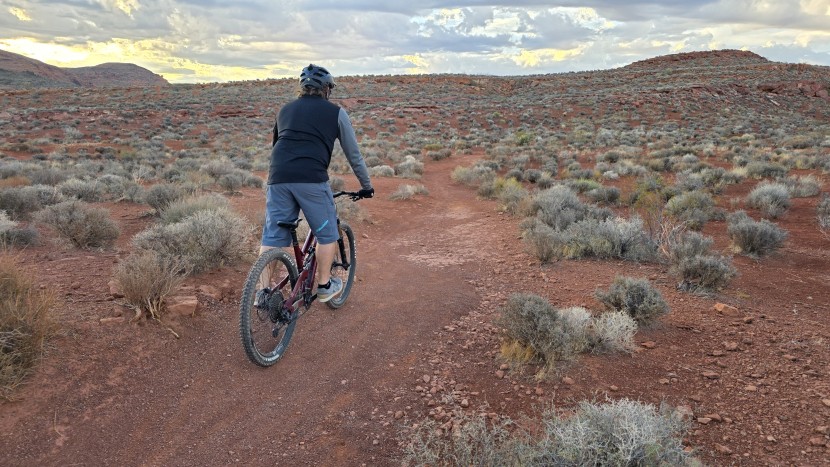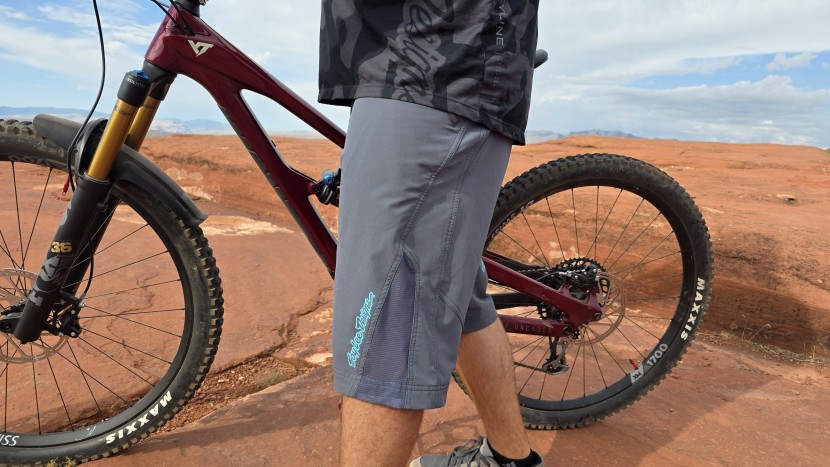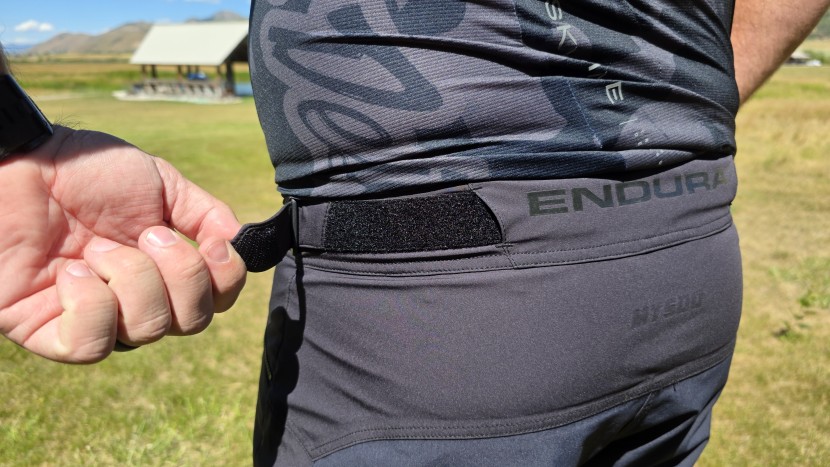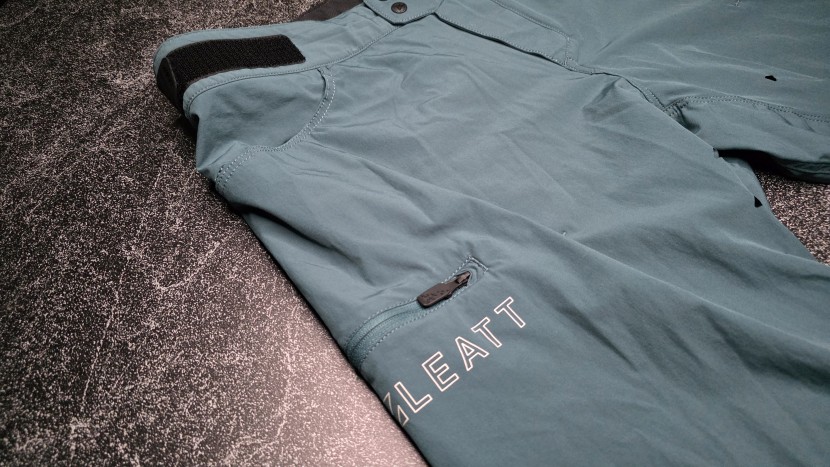For obsessive mountain bikers and gear nerds like us, testing mountain bike products is one of the more enjoyable jobs imaginable. Typically, it involves long days in the saddle with intense scrutiny of the products in question before, during, and after our rides. In this case, we tested all the pairs of mountain bike shorts in this review for an extended period on the incredible variety of trails in and around the Lake Tahoe area in northern California and Nevada, some of the highest mountain trails and scorching southern desert of Utah, and the beautiful scenic landscape of Western Wyoming. The scope of riding locations exists in a range of climates, from loamy foothill forests to high desert hardpack and everything in between. We splashed through streams and mud, sweat in the sweltering desert sun, shivered in some late spring storms, and abused each pair of shorts as if they were our own. We don't discriminate, so we used each pair of shorts for all types of riding: laps at the bike park, XC hammer-fests, all-day epics, short enduro laps, you name it. Each pair was tested with and without kneepads on trails that ranged from silky smooth to knock-your-fillings-out rowdy. We crashed occasionally, had many a close encounter with tree bark and bushes, and always got the shorts dirty. Through it all, we kept detailed notes on all aspects of each pair's performance, and we rated them all on six predetermined metrics: Comfort & Fit, Pedal Friendliness, Protection, Breathability, Features, and Quality Construction. We compiled these scores to determine which shorts are the best and why.
Comfort & Fit
We feel that the overall comfort and fit of a pair of mountain bike shorts is one of their more important attributes. While comfort is somewhat subjective, there are some factors that go into this assessment, things like the feel of the fabric, overall fit, and chamois liner (if included), all affect the comfort of the shorts. Some of the shorts we tested come with an included chamois liner, while others are intended to be worn over your own. Chamois liners are not created equal, and many people have specific preferences when it comes to this very personal piece of a riding kit. Some don't want their shorts to come with one, while others feel that an included chamois is an added value to a pair of baggy shorts. Shorts that do not come with a liner are not scored lower than those that do. For shorts that do include a chamois liner, we did test them and provided our opinion on the comfort and quality of each.
Pedal Friendliness
Throughout our testing, we pedaled hundreds of miles in each pair of shorts, and we rated the overall pedal friendliness of them all. The pedal friendliness of every pair of shorts is highly impacted based on factors including the cut, articulation, length of the inseam, circumference of the leg holes, waist adjustment, and stretch and feel of the materials. We do make a note of how the shorts fit off the bike, but we were primarily concerned with how they fit while riding. It quickly became evident to us that some shorts are better suited to hammering out long miles, while others are less pedal-friendly. The fit of the shorts and the materials used are the primary factors that influence pedal friendliness, and some shorts provide more resistance during the pedal stroke than others. Sure, all of the shorts in this review are suitable for use during any mountain bike ride, from XC to downhill, but some are just better for specific styles of riding than others.
Protection
Shorts aren't usually considered to be a protective accessory, although they do provide the rider with a thin layer of protection from direct contact with objective hazards like the ground, bushes, trees, etc. Differences between the fit and materials of the various pairs help make some more protective than others. The overall length of the shorts dictates the amount of coverage they provide, resulting in more or less protection for the upper legs and sometimes your knees. The length of the shorts, as well as the size of the leg opening by the knee, also affect how well the shorts work with knee pads; some are better suited for this than others. Some even feature an asymmetrical cut, leaving them a bit longer in the front to allow better articulation when worn with kneepads. The thickness of the materials used in the shorts will also play a role in how well they can protect you from trailside hazards, or in the event of a crash, and our experiences crashing and brushing up against bushes and branches factor into this assessment.
Breathability
The ability of the fabric of mountain bike shorts to breathe is paramount not only in hot weather circumstances but in cold weather, too. In hot weather, we're looking for shorts to allow airflow both through the fabric of the shorts and any vents to keep you cool and provide vital airflow to also help dry sweat as it's wicked away by the fabric. In cold weather, it's important that if you do sweat, the fabric is capable of wicking away your sweat and can be dried quickly so that it doesn't make you wet and cold. Especially if you decide to wear additional protection like kneepads, breathability is going to be even more crucial in keeping you cool and comfortable with those pads trapping heat against your legs.
Features
Features of mountain bike shorts range from mild to wild. We feel that a solid pair of mountain bike shorts will at least include some vital features like waist adjusters, pockets, and high-quality zippers. When you're hammering through a rock section, pockets don't do you much good if your valuables bounce out because the pockets are unsecured. We also test to see which pockets are accessible while in the saddle, so you don't have to stop and dismount to utilize them. We test all shorts with pocket zippers to make sure that the zippers are easy to find and use, even when wearing gloves. Waist adjusters seem to be easy to integrate into a pair of shorts' design, but tricky to make them unobtrusive and useful. We test waist adjusters to see how easy they are to use and if they actually offer meaningful adjustment capability.
Quality Construction
Mountain biking shorts, and anything associated with the sport for that matter, aren't exactly cheap, so the quality of them is an important aspect that we took into consideration. We carefully examined each pair of shorts inside and out, top to bottom, looking for quality construction with symmetrical sewing and tidy stitching. We tested the quality and durability of each pair of shorts by thrashing on them with more gusto than we typically would our shorts. We crashed in more than a few pairs, not intentionally, of course, and made frequent and excessive contact with trailside bushes, branches, and tree bark. We splashed through creeks and mud puddles, making sure to grind the mud into the seat of the shorts. We went out of our way to overuse the snaps, zippers, and velcro to wear them out. We washed and dried them more than we normally would to see how they stood up to the machines. We went above and beyond, and at the end of our test period, we examined each pair closely to see how they weathered the storm. We closely examined the stitching and material for tears or runs, the seat of the shorts for permanent staining, and the zippers, snaps, and velcro for abnormal wear and tear. In general, we found the shorts that are made from heavier-weight materials to be more durable, although these shorts often scored lower in other rating metrics because of the bulkier fabrics.






